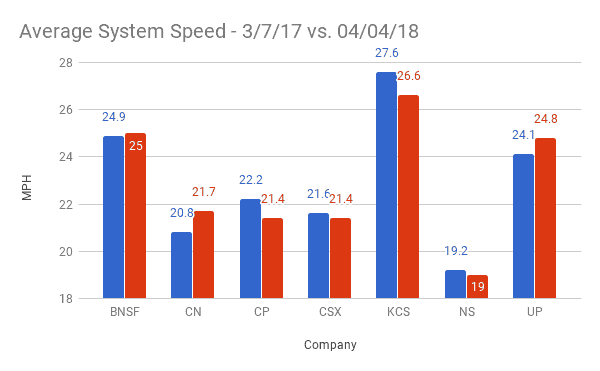With rail service issues very much on the minds of the entire supply chain, it’s good to take a look at the current performance of the class 1 railroads in the U.S., and see whether there has been any improvement in performance in the last two weeks..
Railroads blamed the weather for some of their problems, and the winter has–sort of–been ending. But certainly, it has not been the type of retreat that one would normally expect by early April.
This data is published weekly by the federal Surface Transportation Board. It is a voluminous spreadsheet, with dozens of categories for each of the seven class 1 railroads. We’ve highlighted here three categories of key interest to truckers and others in the supply chain: how fast are trains going in intermodal transportation? How fast are trains going overall, for all uses? And how much dwell time are rail cars spending at terminals, which can have an impact on trucker detention.
We’ve done a quick snapshot here of those three categories for all seven railroads: CSX, Canadian National, Canadian Pacific, BNSF, Union Pacific, Kansas City Southern and Norfolk Southern.
In the case of CSX, its problems have become so severe that it is required to submit a separate update. You can find that here.
The quick takeaway from this data is that speed changes in the latest report were both up and down. The same can be said of dwell times. The variations are railroad to railroad.


In hours










